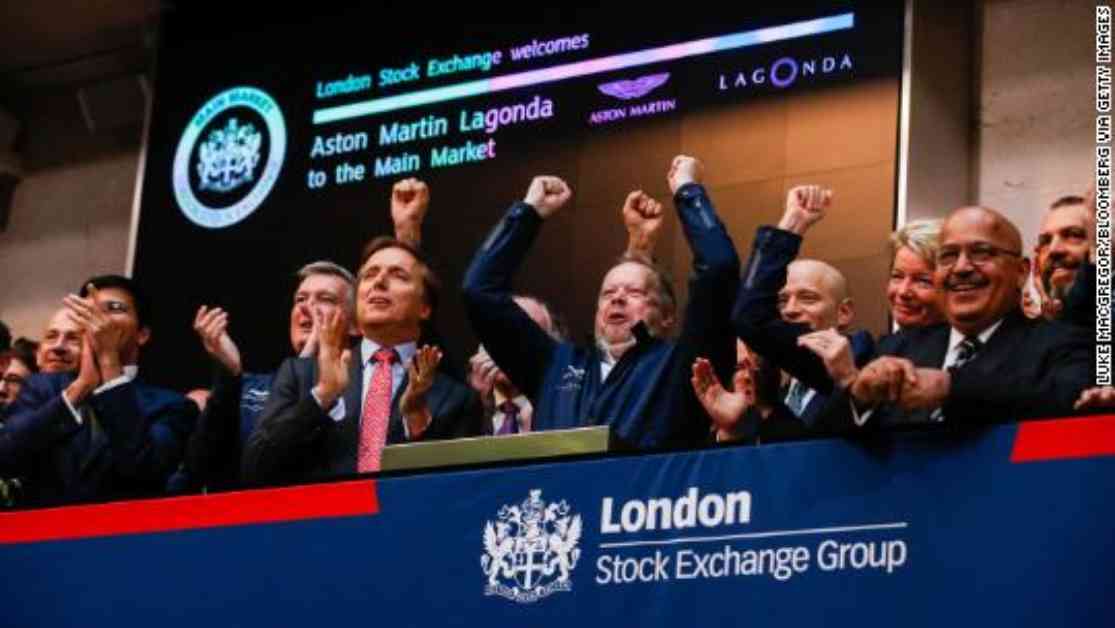Aston Martin recently made its debut on the London Stock Exchange with an Initial Public Offering (IPO) that valued the British automaker at over $5 billion. Despite high expectations, the company’s first day of trading did not go as planned. The shares were priced at £19.00 ($24.70), which resulted in a valuation of £4.3 billion ($5.6 billion). However, this was 16% below the targeted range, indicating investor skepticism about Aston Martin being on par with Italian competitor Ferrari.
The IPO saw a drop of nearly 5% in share price during London trading, raising concerns about the company’s ability to compete in the luxury car market. Aston Martin’s decision to go public comes at a time of uncertainty, with potential challenges like US tariffs on foreign cars and Brexit disrupting supply chains and markets.
Despite a history of financial struggles, Aston Martin has shown signs of improvement in recent years. The company reported record revenues of £876 million ($1.1 billion) in 2017, a 50% increase from the previous year. The first half of this year also saw growth, with an 8% rise in revenue and a 14% increase in profits.
Analysts have pointed out several weaknesses in Aston Martin’s business model compared to Ferrari. The British automaker has a less prominent brand, lower profit margins, and a history of inconsistent sales. The success of a planned SUV, for which IPO proceeds will be used, is crucial for Aston Martin’s future profitability.
Major shareholders of Aston Martin include Daimler, Investindustrial, and investors from Kuwait. The company’s ability to compete with established luxury car brands like Ferrari remains uncertain, as analysts question its long-term profitability and sustainability in the market.




